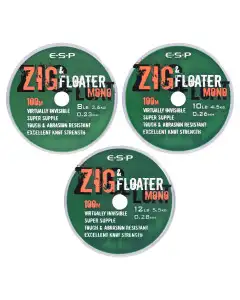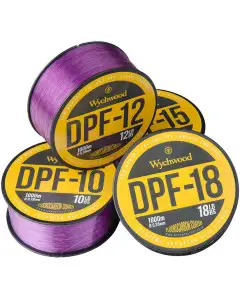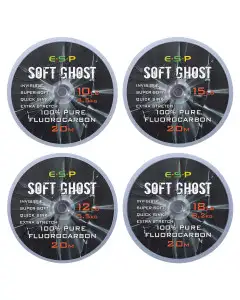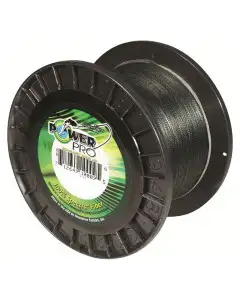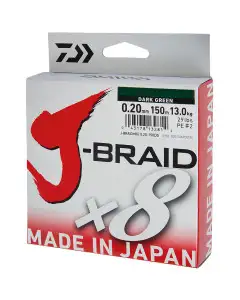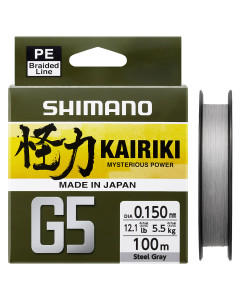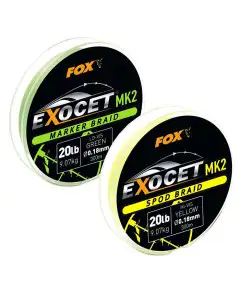This is a demo store. No orders will be fulfilled.
Mono vs. Fluorocarbon vs. Braid: What Line is Best for Freshwater Fishing?
This entry was posted on by Anna Cooper

The fishing line is an essential component of any angler's tackle box. It is the link between the angler and the fish. Choosing the right fishing line for a particular fishing situation can be the difference between a successful catch and a frustrating day on the water.
The type of line you choose can have a significant impact on your success on the water. In this article, we will compare the advantages and disadvantages of each type of fishing line and determine which one is best for freshwater fishing.
What are the three types of fishing lines?
Monofilament, fluorocarbon, and braid are the three most popular types of fishing lines for freshwater fishing. Each with its unique advantages and disadvantages. In this expert-focused article, we will explore the differences between these three types of fishing lines and help you determine which one is best for your next fishing trip.
Mono Fishing Lines


Mono or monofilament fishing lines are made of a single strand of nylon, making them the most commonly used fishing line for freshwater fishing. These lines are versatile and suitable for a wide range of fishing techniques. Mono lines come in different colours, sizes, and strengths, making them suitable for various fishing conditions.
Advantages of Mono Lines
+ Excellent knot strength
+ Easy to tie and secure
+ Very stretchy
+ Have some give when a fish strikes
+ Prevents the line from snapping
+ Very affordable than other lines
+ Great for anglers on any budget
Disadvantages of Mono Lines
- Not as strong as other types of fishing lines
- Less suitable for larger fish species
- More visible than fluorocarbon lines
- Less effective in clear water conditions
- Tend to degrade over time
- Need to be replaced more frequently
What is the most common fishing line?
The monofilament line is the most commonly available due to its low cost. It is best used for fishing in murky waters, where the fish are less likely to be spooked by the line's visibility. They are also useful for fishing with lures that require a bit of stretch, such as crankbaits or topwater lures. However, mono lines are not suitable for fishing in heavy cover like weeds, as they are more likely to break or get snagged.
Best Mono Fishing Line UK
A good mono should be limp and have little memory – some lines curl to the shape of the spool you buy them on and this line will prove hard to cast and tangles can often occur. Some of the best monofilament fishing lines for UK freshwaters include:
Top Mono Fishing Lines
Fluorocarbon Fishing Lines


Fluorocarbon fishing lines are made of a single strand of fluoropolymer, making them less visible than mono lines. This makes them an ideal choice for clear water conditions. Fluorocarbon lines are more expensive than mono lines, but they offer several advantages that make them worth the investment.
Advantages of Fluorocarbon
+ Virtually invisible underwater
+ Ideal for fishing in clear water conditions
+ Have a lower level of stretch than mono lines
+ Offer better sensitivity and hook-setting ability
+ More durable than mono lines
+ Can last longer without needing to be replaced
Disadvantages of Fluorocarbon
- More expensive than mono lines
- Less accessible for some anglers
- More brittle than mono lines
- Can break more easily if not handled carefully
- Can also be difficult to tie knots with, as they tend to slip.
What Type of Line is Invisible to Fish?
One of the best uses of fluorocarbon fishing lines is for fishing in clear water conditions, where the fish are more likely to see the fishing line because it is next to invisible! They are also useful for finesse fishing techniques, such as drop-shotting. However, fluorocarbon lines are not suitable for fishing in heavy cover, as they are more likely to break.
A fluorocarbon mainline is common among carp anglers who like the fact that they can sink the line without the use of back leads, making it perfect for hard waters where the fish are wary of tight lines arrowing through the water. It’s also great as a replacement for lead-core leaders because of its hard-wearing characteristics. The best knot type when using Fluoro is a three or four-turn tucked blood knot.
Recommended Fluorocarbon Fishing Lines
You can pick up fluorocarbon in breaking strains from 1lb all the way through to over 40lb, although for most fishing situations 15lb will be the maximum you will need. Flouro of 40lb and above makes an excellent alternative to wire traces for jerk baiting and doesn’t show up in the water as the wire does. Some of the best fluorocarbon fishing lines for freshwater fishing include:
Top Fluoro Fishing Lines
Braid Fishing Lines


Braid fishing lines are made of multiple strands of synthetic fibres, which makes them stronger and thinner than other types of fishing lines. Braid lines are becoming increasingly popular among anglers for freshwater fishing due to their superior strength and sensitivity.
Advantages of Braid
+ The lines are incredibly strong
+ Suitable for catching larger fish species
+ Have a low level of stretch
+ Offer excellent sensitivity and hook-setting ability
+ Very durable
+ Last longer than mono or fluorocarbon lines
Disadvantages of Braid
- Lines are more visible than fluorocarbon lines
- Less effective in clear water conditions
- More expensive than mono lines
- Can be more difficult to handle
- Lack of stretch
- Prone to backlash and tangling
What is the strongest line?
Braid! Using multiple lines to form its diameter, braid is the strongest of the 3 line types. For this reason, braid lines are best used for fishing in heavy cover, where the line needs to be strong enough to withstand abrasions and snags.
They are also suitable for fishing in deeper waters, where sensitivity is essential for detecting bites. Braid lines are not suitable for finesse fishing techniques that require a bit of stretch, such as crankbaits or topwater lures. The best knot with mono is the five-turn grinner.
Braid Lines for Fishing
For freshwater fishing, we’d recommend using 30lb to 40lb fishing braid for strong species, like pike. This may seem excessive, but a 40lb braid has a surprisingly thin diameter. This makes it easy to cast large dead baits.
With a strong fishing braid line, you’ll be able to pull out most snags. Subsequently, retrieving a potentially deadly baited rig in the water. Some of the best braid fishing lines for freshwater fishing include:
Top Braid Fishing Lines
Does it matter what fishing line you use?
When it comes to choosing the best fishing line for freshwater fishing, it's essential to consider the specific fishing conditions and techniques you will be using. Mono lines are versatile and affordable, making them an excellent choice for beginners or anglers on a budget. Fluorocarbon lines offer superior sensitivity and invisibility, making them suitable for clear water conditions and finesse fishing techniques. Braid lines offer unmatched strength and durability, making them suitable for heavy cover and larger fish species.
When choosing your fishing line be sure to consider the following:
- Strength and sensitivity
- Visibility and colour
- Stretch and abrasion resistance
- Knot strength
- Ease of use
- Overall performance


What is the Easiest Fishing Line to Use?
In general, the monofilament line is considered to be the easiest to use for most anglers, particularly beginners. Monofilament line is relatively easy to handle and cast, it has some stretch which can help to absorb shock when fighting a fish, and it is also relatively inexpensive compared to other types of fishing lines.
Additionally, monofilament is versatile and can be used for a wide range of fishing techniques and species. So if you're just starting out with fishing, a monofilament fishing line is a great option to consider.
The hardest or most challenging fishing line is the fly fishing line. Be sure to do your research for fly fishing tactics and the best line to use.
What Strength Fishing Line Do I Need?
If you're new to freshwater fishing, you might wonder what line strength you should use. This is usually measured in breaking strain (the minimum that the line should break at) and line diameters (thickness of the line). The general rule of thumb for freshwater fishing is to stick with the standard 6-8 lb breaking strain. However, with braid, you can achieve a high breaking strain for the diameter compared to mono and fluoro.
1lb to 4lb breaking strain - Very light lines like these are great for small species like roach, rudd and perch, where finesse is needed to get bites. A 4lb mainline is a good starting point. It’s light enough to catch small freshwater fish in the UK and strong enough to land a carp or other large fish if they come along.
5lb to 10lb breaking strain - Mid-sized species like tench, bream, barbel and chub. Scale to 6lb to 8lb for large bream because these don’t fight as hard as tench.
10lb plus breaking strain - Some of the best carp fishing lines have this breaking strain. Large, hard-fighting freshwater fish like carp need a 10lb minimum and we’d recommend using a 30lb to 40lb braid for pike.
Every water is different and you should only use this as a guide. For example, if you are fishing very snaggy water then you may want to increase your line strength to cope. The same goes in open water with no snags; here you might want to look at lowering your line strength, giving you a subtler presentation.


Is it bad to use too strong line for fishing?
Using a fishing line that is too strong for the situation will generally be more resistant to breaking or being damaged by abrasion. This is great when fishing in areas with a lot of rocks or snagging. A stronger line can also help to quickly tire out a fish, making it easier to land and release.
However, using a line that is too strong is likely to be more visible to fish and can spook them, making them less likely to bite. Additionally, a heavier/ stronger line can be more difficult to cast, particularly for beginners.
What Type of Line is Best for Carp?
Picking a carp fishing line can be tricky. In this video, Chirs, a carp fishing expert, talks us through the best fishing line for carp and when to use certain weights.
How To Store Fishing Line
We suggest keeping your lines in the dark place and changing your mainline every season. Make sure to clean your line in between sessions, as reeling your line in for the last time, be sure to use a wipe to catch all the dirt and debris from the waters so that your line can be spooled, clean and fresh.
Need to change your fishing line? Check out our re-spooling services at your local Angling Direct!


How To Dispose of Fishing Line?
When your mono line is looking tired or you desperately need to replace your braid line, be sure to save your old fishing line to bring in with you on your next visit to Angling Direct. All of our fishing tackle shops have line recycling bins so you can dispose of your fishing line safely and sustainably.
The choice between mono, fluorocarbon, and braid lines ultimately depends on the specific fishing situation and personal preference. When fishing, it is important to select a line that fits your technique and has the necessary toughness, responsiveness, and transparency to be successful with the type of fish you are attempting to catch.
Remember to try different fishing lines and experiment with different techniques. You could even try a hybrid of fluruo and braid. With one as your main line and one as your leader? The world is your oyster when it comes to fishing line!

